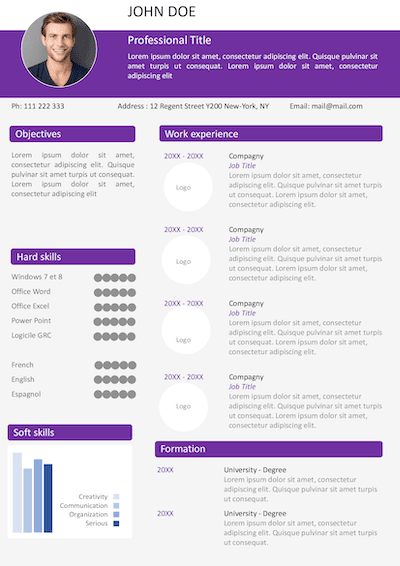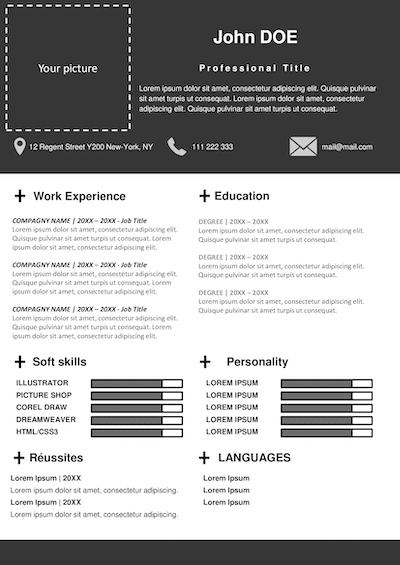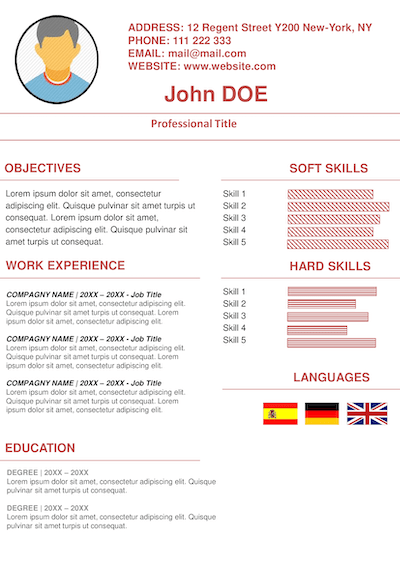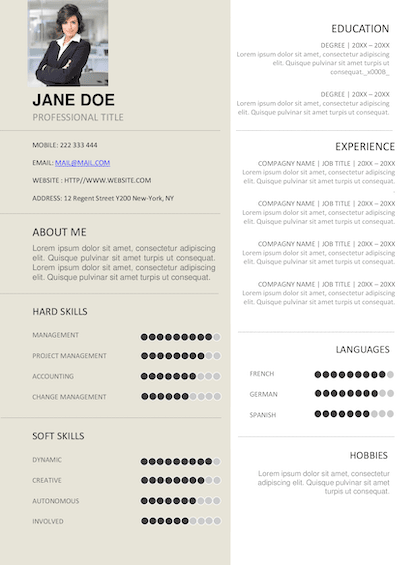Resume Advices : 101
Understand What Makes a Great Resume
Many job applicants are under a misconception that a great Curriculum Vitae means fluffing up terms, adding lots of jobs and experience, listing as many skills as possible, and engaging in other overkill tactics. Excessive and irrelevant information only clutters the page and makes it more difficult to find the skills and information for which your prospective employer is searching. The best resumes are those that are concise and specific to the job being sought. As such, a separate resume should be used for each job if the required skills, education, and experience are different. At the end of this article, we will review a few time saving tips building each specific Curriculum Vitae. First, though, let’s take a look at how to write a winning CV.
Review All Job Description Material and More (If Necessary)
While some employers seem to be in the habit of posting as little information as possible, others provide a great deal of valuable information relevant to not only the skills, experience, and education of a desired employee, but also the description, expectations, and demands of the job itself. Acquire as much information as you can about the position. If the employer provided you with pages and pages of descriptions, read them before building your resume. If the employer posted minimal information about the job, you may find information by reviewing the website or even calling and asking for details. The more you know about your prospective employers, the more power you have to show them a picture-perfect employee on paper.
Stay Realistic
If you read terms you don’t really understand, see requirements for education levels you haven’t reached, or find any other indication that you’re not a good candidate for the job; don’t waste your time applying. Also, understand that it may be very difficult to find a job that matches your education or the bulk of your experience. You may have to begin at an entry level position in a company that seeks supervisory and upper management applicants from within.
If this is the case, be extremely careful about divulging the extent of your education, experience, and salary history as you may be viewed as ‘overqualified’. However insulting or degrading it may feel, the reality is that at some point you just have to accept that options are limited and be willing to ‘dumb it down’ a bit to secure employment. Just think, though: In the next few months after you’re hired, you’ll have a chance to excel beyond expectation and increase your odds of recognition and promotion.
Use Only Relevant Terms, Skills, and Experience
If you feel the need to add more information to your curriculum vitae than what’s absolutely relevant, make sure that the most compelling details are on the first page and that it’s not crowded with words. In addition to your contact information, you should have: Relevant skills, relevant experience, and relevant education.
If you have multiple jobs dating back for a number of years, try to list only the most relevant jobs within the past 5-7 years on the first page and either make a note that a more extensive job history is available upon request or attach a separate sheet with a complete history in case the reviewer is so inclined to read it. Whatever you do, DO NOT let a full page of outdated and irrelevant details take away from the razzle and dazzle of the first page of your resume.
Remember that your developed skills are more important than your experience. Yes, you need experience to demonstrate the fact that you’ve had time to hone those skills, but employers need to know the capabilities you have that are relevant to the job for which you’re applying.
The Verbiage of Your Curriculum Vitae
You want your C.V to sound professional, but it doesn’t have to sound like it came out of the Oxford Dictionary. Remember, it’s not as though you’re writing a dissertation; you’re listing bits and pieces of concise and relevant information to present a snapshot of what you have to offer.
Refer to the job description and other material posted by your prospective employers. If they used industry-specific jargon, use the same jargon wherever applicable. Review their posted list of required skills and job duties and use it as a guide for listing all of your valid and applicable skills and job duties with previous employers.
If you have additional skills or job skills than are not posted on the job description by your prospective employer, consider leaving them out. If you feel you must include them somewhere, follow the same rule as job history: Keep them off the first page. Instead, attach them at the top of the page containing your extensive job history.
Font and Design
You have 2 primary goals for your curriculum vitae: Make it easy to read and make every word count. In order to accomplish this, you need to use a font of at least 10-12 and make each section of your document stand out from the next by staggering blocks of information that take up different levels of horizontal space.
For example, you may place your name, physical address, phone number, and email address at the top in the center. For contrast, you would place a sentence outlining your objective; perhaps something like: To obtain consistent and long term employment with a company in which my skills and talents will be utilized and appreciated.
Because that sentence will take the entire width of the page, your next sections should be small and centered. This would be a great place to list your skills. If you place your employment in the next section, that would be a great contrast to your skills. Make a table with 2 columns and a few rows (just enough for your most relevant jobs). Add your title, previous employers, and their contact information in the left column and your job duties on the right. Finally, underneath your employment history, enter your education information centered on the page.
Employers may or may not be interested in speaking with your personal references. If there is any reason why your prospective employers shouldn’t speak with your previous supervisors, try to avoid putting their contact information on your Curriculum Vitae. Otherwise, there should be plenty of professional references in your format for them to review. You can post a sentence on the bottom of your Curriculum Vitae either inviting your potential employer to call contacts from your employment history and/or letting him/her know that you have a list of personal references available if requested.
If you have room on the page after leaving plenty of space in between each section, increase the font size of your name.
Consider a Cover Letter
If you have adequate or advanced linguistic skills, consider writing a short cover letter (3-5 small to moderate paragraphs) introducing yourself and outlining your skills, dedication, ambition, work ethic, and any other relevant piece of information that increases your appeal to an employer but may not have a proper place on your Curriculum Vitae. Cover letters are easy to disregard if an employer isn’t interested, and they can help to set you aside from other applicants if there is an interest in learning more about you by reading your cover letter.
Time Saving Tips
You can either use the outline provided in this article or you can create your own curriculum vitae outline containing your name, contact information, and the basic sections you will need to fill out per application. Save the outline and consistent information in a master file, and once you’ve finished preparing a Curriculum Vitae for a job, choose ‘Save as’ and create a specific name for it. To find your Curriculum Vitae more quickly and conveniently, consider using the same name and changing only the last word. For example, you may save your resume as ‘MyResumeCompany.doc’. Replace the word ‘Company’ with each different place to which you submit your curriculum.



